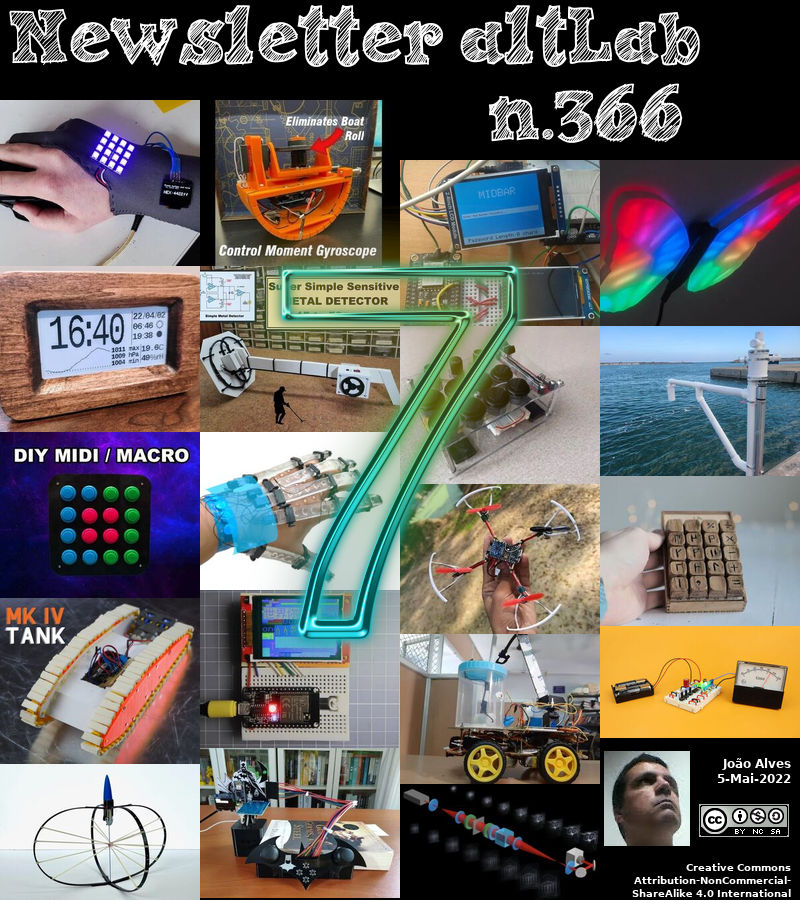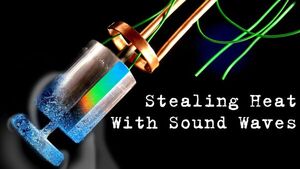2022-05-05 - Nº 366
Editorial
Esta é a Newsletter Nº 366 que se apresenta com o mesmo formato que as anteriores. Se gostar da Newsletter partilhe-a!
Todas as Newsletters encontram-se indexadas no link.
Esta Newsletter tem os seguintes tópicos:
Faz hoje anos que nascia, em 1719, o inventor escocês Andrew Meikle. Ele é responsável pela invenção da debulhadora de tambor. As suas tentativas de 1778 de construir uma debulhadora foram infrutíferas, com base em desenhos anteriores de outros que esfregavam o grão. A partir de cerca de 1784, Meikle desenvolveu em vez disso uma máquina usando a ideia de um forte tambor giratório e barras de batedeira fixas para esculpir o grão como uma máquina de espadelar do seu tempo usada para bater as fibras das plantas de linho. Poupando muito trabalho manual, a máquina separou o grão, das espigas, caules ou cascas e limpou-o. Patenteou-a 9 de Abril de 1788.
Faz também hoje anos que nascia, em 1811, o químico inglês-americano John William Draper. Ele foi pioneiro na fotoquímica. Ele reconheceu que a luz iniciou reacções químicas como moléculas absorvendo a energia da luz. O Draper Point é o nome dado ao ponto em que todas as substâncias brilham um vermelho baço (cerca de 525 graus C.). Ele descreveu o efeito do aumento da temperatura como a adição de cada vez mais da região da luz visível produziu um brilho branco (1847). O seu interesse em espectroscopia e fotografia foi aplicado para dar a primeira fotografia astronómica. O seu tema era a lua (1840). Também estudou fotografias do espectro solar para mostrar que continha tanto luz infravermelha como ultravioleta. As suas fotografias de pessoas incluem o retrato fotográfico sobrevivente mais antigo (1840), e ele foi um dos primeiros a produzir microfotografias.
Faz igualmente hoje anos que nascia, em 1861, o engenheiro electrotécnico norte-americano Peter Cooper Hewitt. Ele inventou a lâmpada de vapor de mercúrio, um importante precursor das lâmpadas fluorescentes. Ele estudou a produção de luz utilizando descargas eléctricas (enquanto Thomas Edison ainda estava a desenvolver filamentos incandescentes). Os tubos cheios de mercúrio que desenvolveu a partir de finais da década de 1890, emitiam uma luz azul-verde pouco atractiva. Embora inadequado em casas, o seu brilho ganhou ampla adopção pelos estúdios fotográficos porque o filme a preto e branco do tempo necessitava apenas de luz brilhante, apesar da sua cor. Havia muitas outras utilizações industriais para a lâmpada. A sua empresa de fabrico (est. 1902) foi comprada pela General Electric em 1919, que produziu um novo desenho em 1933. Em 17 de Setembro de 1901, ele tirou as suas primeiras oito patentes de lâmpada de vapor de mercúrio.
Por fim, faz hoje anos que nascia, em 1961, o físico norte-americano Arthur Leonard Schawlow. Ele partilhou (com os investigadores independentes Nicolaas Bloembergen e Kai Siegbahn) o Prémio Nobel da Física de 1981 pelo seu trabalho no desenvolvimento do laser e na espectroscopia laser. Com Theodor Hänsch, Schawlow utilizou lasers de corantes sintonizáveis para espectroscopia de alta resolução. No início da sua carreira, Schawlow colaborou com Charles Townes na investigação dos princípios de maser. Embora não tenha participado no Prémio Nobel da Física de 1964, que foi atribuído a Townes e a dois cientistas russos pela sua investigação sobre maser e laser, Schawlow ainda é considerado como um co-inventor do laser".
Faz hoje trinta anos que era lançado, pela id Software, o Wolfenstein 3D, um emocionante jogo FPS, ambientado durante a Segunda Guerra Mundial. Abriu novo terreno para jogos de PC baseados na acção e continuou uma série de sucessos crescentes para a id Software. Os seus criadores mais conhecidos são John Carmack, John Romero, e Tom Hall. Disponibilizado a 5 de maio de 1992 este seria o início de uma série de jogos deste tipo que ainda hoje têm uma legião de fãs.
Nesta semana que passou a Rocket Lab lançou em órbita 34 satélites e apanha o foguetão de volta do espaço com a ajuda de um helicóptero. O primeiro estágio do foguetão Electron foi recuperado usando um helicóptero que o aguardava depois de ter aberto um paraquedas para estabilizar a sua velocidade.
Também nesta semana que passou, o telescópio espacial James Webb concluiu a sua fase de alinhamento dos espelhos com sucesso. Para este teste, o telescópio apontou para parte da Grande Nuvem de Magalhães, uma pequena galáxia satélite da Via Láctea, fornecendo um campo denso de centenas de milhares de estrelas através de todos os sensores do observatório. Estes dados de imagem são utilizados não só para avaliar a nitidez da imagem, mas também para medir e calibrar com precisão distorções e alinhamentos subtis da imagem entre os sensores do instrumento como parte do processo global de calibração de instrumentos do telescópio.
E hoje comemoramos o sétimo ano de newsletter. Foram 366 semanas sem interrupções a trazer o que de melhor se faz na Internet nos campos da Ciência e Tecnologia, não esquecendo os diversos projectos DIY que os autores colocam online e também diversas notícias interessantes.
Na Newsletter desta semana apresentamos diversas notícias, artigos científicos, projetos de maker e alguns vídeos interessantes. É apresentada a revista MagPi nº117 de Maio.
 João Alves ([email protected])
João Alves ([email protected])
O conteúdo da Newsletter encontra-se sob a licença  Creative Commons Attribution-NonCommercial-ShareAlike 4.0 International License.
Creative Commons Attribution-NonCommercial-ShareAlike 4.0 International License.
Novidades da Semana

Rocket Lab Successfully Deploys 34 Satellites and Catches Rocket Booster Returning from Space with Helicopter
"Rocket Lab (Nasdaq: RKLB) (“Rocket Lab” or “the Company”), a leading launch and space systems company, has successfully launched its 26th Electron mission, deploying 34 satellites to orbit. Rocket Lab has now deployed a total of 146 satellites to orbit with the Electron launch vehicle. The “There And Back Again” mission also saw Rocket Lab complete a mid-air capture of the Electron booster with a helicopter for the first time. After launching to space, Electron’s first stage returned to Earth under a parachute. At 6,500 ft, Rocket Lab’s Sikorsky S-92 helicopter rendezvoused with the returning stage and used a hook on a long line to capture the parachute line. The mid-air capture is a major milestone in Rocket Lab’s pursuit to make Electron a reusable rocket to increase launch frequency and reduce launch costs for small satellites." [...]
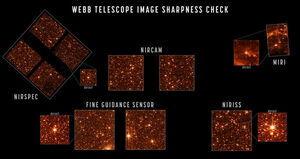
The Webb Telescope Completes Alignment Phase
"It is official, alignment of NASA’s James Webb Space Telescope is now complete. The alignment of the telescope across all of Webb’s instruments can be seen in a series of images that captures the observatory’s full field of view. Featured in this video are engineering images demonstrating the sharp focus of each instrument. For this test, Webb pointed at part of the Large Magellanic Cloud, a small satellite galaxy of the Milky Way, providing a dense field of hundreds of thousands of stars across all the observatory’s sensors. The sizes and positions of the images shown depict the relative arrangement of each of Webb’s instruments in the telescope’s focal plane, each pointing at a slightly offset part of the sky relative to one another. Webb’s three imaging instruments are NIRCam (images shown here at a wavelength of 2 microns), NIRISS (image shown here at 1.5 microns), and MIRI (shown at 7.7 microns, a longer wavelength revealing emission from interstellar clouds as well as starlight)." [...]
Outras Notícias

Analog Devices’ New Easy Drive™ SAR ADCs Simplify Design While Delivering Industry Leading Performance
"Analog Devices, Inc. today introduced a new portfolio of next-generation 16-to-24-bit, ultra-high precision successive approximation register (SAR) analog-to-digital converters (ADCs) that simplify the often complex process of designing ADCs into instrumentation, industrial and healthcare applications. The new high-performance SAR ADC family features ADI’s patented Easy Drive™ technology and versatile Flexi-SPI serial peripheral interface (SPI) that solve system design challenges and broaden the selection of directly compatible companion products. ADI’s Easy Drive technology maintains device performance while eliminating many traditional system-level design challenges such as strict layout guidelines, rigid digital interface timing requirements, and the complicated selection of companion products. The versatile Flexi-SPI digital interface eases host processor and ADC integration by providing easy-to-meet timing requirements. The combination of high performance with this reimagined digital interface provides a better overall design experience while also accelerating the system design cycle. First in the pin-compatible SAR ADC family of six, the 24-bit dual-channel, simultaneous sampling, two Megasamples (Msps) per second per channel AD4630-24 features an industry leading accuracy (INL) rating of 0.9 parts per million (ppm), which is a 4x improvement when compared to others." [...]

STMicroelectronics’ single-chip digital-power controller simplifies design and increases flexibility in LED-lighting applications
"STMicroelectronics’ STNRG012 is a highly integrated and space-saving digital power controller with advanced distortion mitigation that delivers an ideal solution for LED-lighting applications. The device contains a multimode power-factor correction (PFC) controller, resonant half-bridge controller, and 800V startup circuit, managed by a digital engine. The PFC controller changes dynamically between transition-mode, discontinuous-current mode (DCM), and valley skipping for optimum efficiency. The half-bridge controller executes ST’s patented time-shift control (TSC) for accurate soft switching. With an input-voltage range up to 305VAC, the STNRG012 also operates from a DC supply targeting designs into both battery-powered and line-powered applications up to 300W. The digital engine is hosted on an 8-bit core and performs optimized control algorithms." [...]
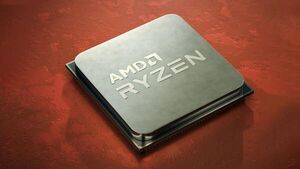
New AMD Ryzen 5000 C-Series Processors Bring Leadership Performance and All-Day Battery Life to Chrome OS
"Today, AMD (NASDAQ: AMD) announced new Ryzen™ 5000 C-Series processors, bringing “Zen 3” architecture to premium Chrome OS devices for work and collaboration. The new processors offer all-day battery life1 and leadership performance with up to eight high-performance x86 cores, the most available for Chrome OS2. These leadership AMD processors enable an expansion beyond education into the growing consumer and commercial Chrome OS markets. With enhanced Radeon™ graphics, Ryzen 5000 C-Series processors for Chrome are expected to offer up to 67% faster responsiveness3 and up to 85% better graphics performance4 than the previous generation. Wi-Fi® 6E and Bluetooth® 5.2 give users cutting-edge connectivity and more data bandwidth than ever before. “AMD is raising the performance bar for modern Chromebooks,” said Saeid Moshkelani, senior vice president and general manager, Client business unit, AMD." [...]

Samsung Unveils New PRO Endurance Memory Card Optimized for Surveillance and Dashboard Cameras
"More durable, higher capacity microSD card enables up to 16 years of continuous recording and playback to capture every critical moment Samsung Electronics, the world leader in advanced memory technology, today announced its new microSD card, the Samsung PRO Endurance. Uniquely designed to meet the rigorous demands of surveillance cameras, dashboard cameras, doorbell cameras, body cameras and more, the card offers improved endurance and outstanding performance for smooth and reliable continuous capture and playback. “From CCTV to doorbell cameras, the need for long-lasting and high-performing video surveillance solutions is continuing to increase, and the PRO Endurance has been designed to support that demand,” said KyuYoung Lee, Vice President of the Memory Brand Product Biz Team at Samsung Electronics. “Both consumers and enterprise users can rest assured that our new memory card will ensure continuous recording at high resolution even under extreme conditions.” Built with Samsung’s highly reliable enterprise-grade NAND flash memory, the PRO Endurance card can deliver up to 16 years (140,160 hours)1 of continuous recording time to ensure every critical moment is captured. This means a single PRO Endurance card can last as long as up to 33 typical speed-focused cards,2 saving frequent replacement costs and providing greater reliability for always-on video monitoring. Samsung’s new memory card also offers read and write speeds of up to 100 megabytes per second (MB/s) and 40 MB/s,3 respectively, and is rated Class 10 with video speed ratings of up to U3 (UHS Speed Class 3) and V30 (Video Speed Class 30).4 This makes it ideal for handling large, high-resolution files while enabling seamless recording and playback in Full HD and 4K." [...]
Ciência e Tecnologia

New method detects deepfake videos with up to 99% accuracy
"Computer scientists at UC Riverside can detect manipulated facial expressions in deepfake videos with higher accuracy than current state-of-the-art methods. The method also works as well as current methods in cases where the facial identity, but not the expression, has been swapped, leading to a generalized approach to detect any kind of facial manipulation. The achievement brings researchers a step closer to developing automated tools for detecting manipulated videos that contain propaganda or misinformation. Developments in video editing software have made it easy to exchange the face of one person for another and alter the expressions on original faces. As unscrupulous leaders and individuals deploy manipulated videos to sway political or social opinions, the ability to identify these videos is considered by many essential to protecting free democracies. Methods exist that can detect with reasonable accuracy when faces have been swapped." [...]
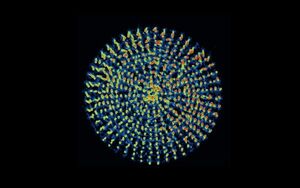
Self-propelled, endlessly programmable artificial cilia
"For years, scientists have been attempting to engineer tiny, artificial cilia for miniature robotic systems that can perform complex motions, including bending, twisting, and reversing. Building these smaller-than-a-human-hair microstructures typically requires multi-step fabrication processes and varying stimuli to create the complex movements, limiting their wide-scale applications. Now, researchers from the Harvard John A. Paulson School of Engineering and Applied Sciences (SEAS) have developed a single-material, single-stimuli microstructure that can outmaneuver even living cilia. These programmable, micron-scale structures could be used for a range of applications, including soft robotics, biocompatible medical devices, and even dynamic information encryption. The research is published in Nature. “Innovations in adaptive self-regulated materials that are capable of a diverse set of programmed motions represent a very active field, which is being tackled by interdisciplinary teams of scientists and engineers,” said Joanna Aizenberg, the Amy Smith Berylson Professor of Materials Science and Professor of Chemistry & Chemical Biology at SEAS and senior author of the paper." [...]
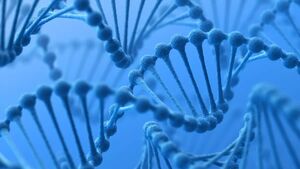
Quantum mechanics could explain why DNA can spontaneously mutate
"The molecules of life, DNA, replicate with astounding precision, yet this process is not immune to mistakes and can lead to mutations. Using sophisticated computer modelling, a team of physicists and chemists at the University of Surrey have shown that such errors in copying can arise due to the strange rules of the quantum world. The two strands of the famous DNA double helix are linked together by subatomic particles called protons – the nuclei of atoms of hydrogen – which provide the glue that bonds molecules called bases together. These so-called hydrogen bonds are like the rungs of a twisted ladder that makes up the double helix structure discovered in 1952 by James Watson and Francis Crick based on the work of Rosalind Franklin and Maurice Wilkins. Normally, these DNA bases (called A, C, T and G) follow strict rules on how they bond together: A always bonds to T and C always to G. This strict pairing is determined by the molecules' shape, fitting them together like pieces in a jigsaw, but if the nature of the hydrogen bonds changes slightly, this can cause the pairing rule to break down, leading to the wrong bases being linked and hence a mutation. Although predicted by Crick and Watson, it is only now that sophisticated computational modelling has been able to quantify the process accurately." [...]

3D printed gloves for rehabilitating stroke patients
"Stroke is India’s third leading cause of death and the sixth leading cause of disability. Physiotherapy is one of the few treatments available for rehabilitating stroke victims and patients with physical injuries. However, physiotherapy can take days to months depending on the severity of the disability, making it challenging for patients as well as their attendants. To help such patients, researchers in the Department of Physics at the Indian Institute of Science (IISc) have developed a soft, wearable device that exploits the fundamental properties of light to sense a patient’s limb or finger movements. The customisable, 3D printed gloves can be remotely controlled, opening up the possibility of teleconsultation by physiotherapists. “We wanted to develop something affordable, and available to a person at all times at their convenience." [...]

Magnetic impurities turn quantum dots into emitters of free electrons
"Manganese impurities added to quantum dots enable high-efficiency generation of free electrons for use in photochemistry and photocathodes. Incorporating magnetic ions into colloidal quantum dots enables them to convert light into a stream of free electrons. This effect could benefit numerous technologies, from solar photochemistry and night-vision goggles to advanced accelerators and free-electron lasers. Victor Klimov, lead Los Alamos National Laboratory researcher on this project, said, “What we have done is to use a process of so-called ‘spin-exchange,’ enabled by adding manganese to specially sized quantum dots, to rapidly push energy from the manganese ions to the quantum dot electron. This eventually allows the electron to reach a ‘free’ unbound state and break loose.” The new process employs a combined energy of multiple manganese ions. Therefore it can be driven by low-energy photons from the visible part of the optical spectrum." [...]

Unpacking black-box models
"Researchers create a mathematical framework to evaluate explanations of machine-learning models and quantify how well people understand them. Modern machine-learning models, such as neural networks, are often referred to as “black boxes” because they are so complex that even the researchers who design them can’t fully understand how they make predictions. To provide some insights, researchers use explanation methods that seek to describe individual model decisions. For example, they may highlight words in a movie review that influenced the model’s decision that the review was positive. But these explanation methods don’t do any good if humans can’t easily understand them, or even misunderstand them. So, MIT researchers created a mathematical framework to formally quantify and evaluate the understandability of explanations for machine-learning models." [...]

Project To Bring Affordable 3D-Printed Stream, Snow, And Storm Surge Sensors To Remote Communities
"Inside a protective shell made of 3D-printed acrylic polymer, a cone-shaped ultrasonic sensor measures the time it takes for intermittent sound waves to bounce back off the rapidly rising water beneath, then sends the data to scientists and community managers who monitor the streamflow from afar. This seemingly small instrument, about the size of a trumpet or trombone, is now part of a much-needed observation system that will help provide early warning of high-impact weather events, like flash flooding, in isolated areas. These new, inexpensive and easy-to-deploy instruments enable people in remote regions of the world to better measure streamflow, storm surges, and snowfall in ways that will better protect society and even save lives. A project at the University Corporation for Atmospheric Research (UCAR), called 3D-PAWS (3D-Printed Automatic Weather Station), is adding a new set of remote-sensing capabilities that will measure streamflow, storm surges, and snowfall depth to its suite of successful 3D-printed weather stations. This initiative will bring low-cost remote sensing instruments to the world’s “unseen” areas. The initial 3D-PAWS initiative began five years ago as a mission to make weather data collecting more accessible." [...]
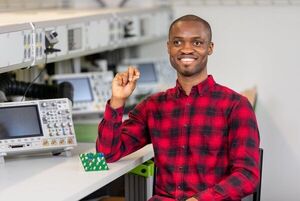
Allowing blind people to see again with a wireless implant
"Adedayo Omisakin worked on the wireless communication technology between a brain implant and a digital camera that can help blind people to see again. Being able to see without eyes. It sounds like a miracle, but in the not-too-distant future a new brain chip could allow the blind and visually impaired to perceive images again. PhD student Adedayo Omisakin worked on wireless communication from and to this innovative implant. He defended his research at the department of Electrical Engineering on Friday April 22nd. None other than blind singer Stevie Wonder expressed his enthusiasm last week for the smart glasses developed by TU Delft startup Envision." [...]
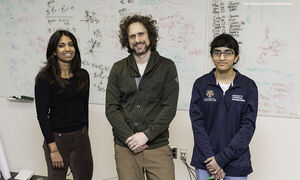
How can we be sure machine learning is accurate?
"Rochester researchers use ‘counterfactuals’ to verify predictions of drug safety. Scientists rely increasingly on models trained with machine learning to provide solutions to complex problems. But how do we know the solutions are trustworthy when the complex algorithms the models use are not easily interrogated or able to explain their decisions to humans? That trust is especially crucial in drug discovery, for example, where machine learning is used to sort through millions of potentially toxic compounds to determine which might be safe candidates for pharmaceutical drugs. “There have been some high-profile accidents in computer science where a model could predict things quite well, but the predictions weren’t based on anything meaningful,” says Andrew White associate professor of chemical engineering at the University of Rochester, in an interview with Chemistry World. White and his lab have developed a new “counterfactual” method, described in Chemical Science, that can be used with any molecular structure-based machine learning model to better understand how the model arrived at a conclusion." [...]

Researchers Create Flat Magic Window with Liquid Crystals
"Inspired by an ancient light trick, technology could enable a new type of 3D display For the first time, researchers have used liquid crystals to create a flat magic window — a transparent device that produces a hidden image when light shines on it. The technology represents a new twist on a very old light trick. Thousands of years ago, artisans in China and Japan made bronze mirrors that looked like a normal flat mirror while viewing one’s reflection but formed another image when hit by direct sunlight. It took until the early 20th century for scientists to understand that these devices work because an image cast into the back of the mirror creates small surface variations that cause the image to form – and it took until now for engineers to apply the same principle to liquid crystals for high-tech displays. “The magic window we created appears perfectly flat to the naked eye but, in fact, has slight variations that create an image in response to light,” said research team leader Felix Hufnagel from the University of Ottawa. “By designing the window to be relatively smooth, the image that is created can be seen over a large range of distances from the window.” In Optica, Optica Publishing Group’s journal for high-impact research, Hufnagel and colleagues describe the process they developed for creating transparent liquid crystal magic windows that can produce any desired image." [...]

Engineers use artificial intelligence to capture the complexity of breaking waves
"Their model’s predictions should help researchers improve ocean climate simulations and hone the design of offshore structures. Waves break once they swell to a critical height, before cresting and crashing into a spray of droplets and bubbles. These waves can be as large as a surfer’s point break and as small as a gentle ripple rolling to shore. For decades, the dynamics of how and when a wave breaks have been too complex to predict. Now, MIT engineers have found a new way to model how waves break. The team used machine learning along with data from wave-tank experiments to tweak equations that have traditionally been used to predict wave behavior." [...]
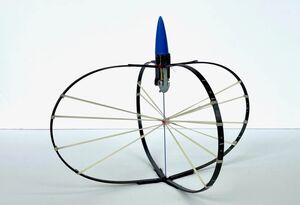
Hitting New Heights
"A device developed in the Hawkes Lab achieves the tallest height of any known jumper, engineered or biological. A mechanical jumper developed by UC Santa Barbara engineering professor Elliot Hawkes and collaborators is capable of achieving the tallest height — roughly 100 feet (30 meters) — of any jumper to date, engineered or biological. The feat represents a fresh approach to the design of jumping devices and advances the understanding of jumping as a form of locomotion. “The motivation came from a scientific question,” said Hawkes, who as a roboticist seeks to understand the many possible methods for a machine to be able to navigate its environment. “We wanted to understand what the limits were on engineered jumpers.” While there are centuries’ worth of studies on biological jumpers (that would be us in the animal kingdom), and decades’ worth of research on mostly bio-inspired mechanical jumpers, he said, the two lines of inquiry have been kept somewhat separate. “There hadn’t really been a study that compares and contrasts the two and how their limits are different — whether engineered jumpers are really limited to the same laws that biological jumpers are,” Hawkes said." [...]
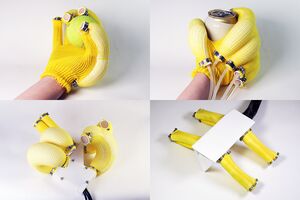
Soft assistive robotic wearables get a boost from rapid design tool
"Scientists have created a design and fabrication tool for soft pneumatic actuators for integrated sensing, which can power personalized health care, smart homes, and gaming. Soft, pneumatic actuators might not be a phrase that comes up in daily conversations, but more likely than not you might have benefited from their utility. The devices use compressed air to power motion, and with sensing capabilities, they've proven to be a critical backbone in a variety of applications such as assistive wearables, robotics, and rehabilitative technologies. But there’s a bit of a bottleneck in creating the little dynamic devices that have advantages like high response rates and power to input ratios. They require a manual design and fabrication pipeline, which translates to a lot of trial and error cycles to actually test and see whether the designs will work. Scientists from MIT’s Computer Science and Artificial Intelligence Laboratory (CSAIL) devised a scalable pipeline to computationally design and digitally fabricate soft pneumatic actuators, called “PneuAct.” PneuAct uses a machine knitting process — not dissimilar to your grandma's plastic needle knitting — but this machine operates autonomously." [...]

A new technique to delete single atoms can speed up molecule design
"UChicago chemists hope breakthrough can help accelerate drug discovery Every time a new cancer drug is announced, it represents hundreds of researchers spending years behind the scenes working to design and test a new molecule. The drug has to be not only effective, but also as safe as possible and easy to manufacture—and these researchers have to choose among thousands of possible options for its chemical structure. But building each possible molecular structure for testing is a laborious process, even if researchers simply want to change a single carbon atom. A new technique published by University of Chicago chemists and the pharmaceutical company Merck & Co. in the journal Science offers a way to leapfrog that process, allowing scientists to quickly and easily produce new molecules of interest. “This allows you to make a tweak to a complex molecule without having to start the design process entirely over,” said Mark Levin, assistant professor of chemistry at UChicago and co-author on the new study. “Our hope is to accelerate discovery by reducing the time and energy that goes into that process.” Bulldozing the house As researchers are considering a molecule, there are many tweaks they might want to test." [...]

Astronomers discover a rare “black widow” binary, with the shortest orbit yet
"The system is orbited by third stellar companion and may have originated near the center of the Milky Way. The flashing of a nearby star has drawn MIT astronomers to a new and mysterious system 3,000 light years from Earth. The stellar oddity appears to be a new “black widow binary” — a rapidly spinning neutron star, or pulsar, that is circling and slowly consuming a smaller companion star, as its arachnid namesake does to its mate. Astronomers know of about two dozen black widow binaries in the Milky Way. This newest candidate, named ZTF J1406+1222, has the shortest orbital period yet identified, with the pulsar and companion star circling each other every 62 minutes. The system is unique in that it appears to host a third, far-flung star that orbits around the two inner stars every 10,000 years." [...]
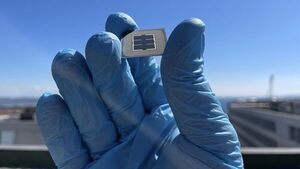
Improving the efficiency of tandem solar cells
"EPFL scientists in Neuchâtel have developed a tandem solar cell that can deliver a certified efficiency of 29.2%. This achievement was made possible by combining a perovskite solar cell with a textured silicon solar cell. Solar cells made of silicon are used widely but have limited power-conversion yields. These yields will likely top out at around 27% in the foreseeable future, owing to fundamental thermodynamic limitations. Modules incorporating these solar cells will have maximum yields of around 23–25%. However, these limitations can be overcome by combining silicon with a complementary solar cell that absorbs the blue-green part of the solar spectrum and employs it more efficiently, forming what’s called a “tandem.” Among the different materials that can be used for the tandem, halide perovskites have recently shown to be the best suited for boosting the efficiency of silicon without adding substantial fabrication costs." [...]

Researchers now able to predict battery lifetimes with machine learning
"Imagine a psychic telling your parents, on the day you were born, how long you would live. A similar experience is possible for battery chemists who are using new computational models to calculate battery lifetimes based on as little as a single cycle of experimental data. In a new study, researchers at the U.S. Department of Energy’s (DOE) Argonne National Laboratory have turned to the power of machine learning to predict the lifetimes of a wide range of different battery chemistries. By using experimental data gathered at Argonne from a set of 300 batteries representing six different battery chemistries, the scientists can accurately determine just how long different batteries will continue to cycle. In a machine learning algorithm, scientists train a computer program to make inferences on an initial set of data, and then take what it has learned from that training to make decisions on another set of data. “For every different kind of battery application, from cell phones to electric vehicles to grid storage, battery lifetime is of fundamental importance for every consumer,” said Argonne computational scientist Noah Paulson, an author of the study." [...]
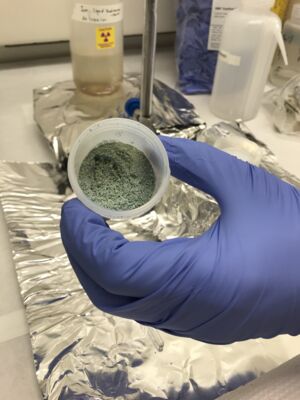
Supercomputing, neutrons crack code to uranium compound’s signature vibes
"Oak Ridge National Laboratory researchers used the nation’s fastest supercomputer to map the molecular vibrations of an important but little-studied uranium compound produced during the nuclear fuel cycle for results that could lead to a cleaner, safer world. The study by researchers from ORNL, Savannah River National Laboratory and the Colorado School of Mines used simulations conducted on ORNL’s Summit supercomputer and state-of-the-art neutron spectroscopy experiments conducted at the Spallation Neutron Source to identify key spectral features of uranium tetrafluoride hydrate, or UFH, a little-studied byproduct of the nuclear fuel cycle. The findings may enable better detection of this environmental pollutant and better understanding of how environmental conditions influence the chemical behavior of fuel cycle materials. “In this kind of work, we don’t have the luxury of choosing what kinds of materials we work with,” said Andrew Miskowiec, an ORNL physicist and lead author of the study. “We’re often dealing with small quantities or even just particles of byproducts and degraded material that no one intended to make of compounds that we don’t know much about. We need to know: If we found this material in the field, how would we recognize it?” UFH forms when uranium tetrafluoride, a radioactive salt routinely used in producing uranium metal, begins to break down after immersion in water for 12 hours or longer." [...]
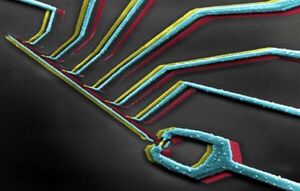
A thermal superconducting quantum interference proximity transistor
"Superconductors are materials that can achieve a state known as superconductivity, in which matter has no electrical resistance and does not allow the penetration of magnetic fields. At low temperatures, these materials are known to be highly effective thermal insulators and, due to the so-called proximity effect, they can also influence the density of states of nearby metallic or superconducting wires. Researchers at Istituto Nanoscienze (CNR) and Scuola Normale Superiore in Italy have recently developed a transistor that takes advantage of this specific quality of superconductors. Their transistor, dubbed a thermal superconducting quantum interference proximity transistor (T-SQUIPT), was introduced in a paper published in Nature Physics. "Our work lies in the frame of phase-coherent caloritronics that aims to envision and realize devices able to master the energy transfer in different nano-scale quantum technology architectures," Francesco Giazotto, one of the researchers who carried out the study, told Phys.org. The main idea behind T-SQUIPT, the transistor developed by Giazotto and his colleagues, is to tune the thermal properties of a metal or superconductor by controlling its spectral characteristics, through the so-called superconducting proximity effect." [...]
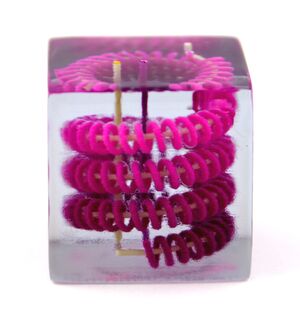
How to print a robot from scratch: New 3D-printing approach melds solids, liquids
"Imagine a future in which you could 3D-print an entire robot or stretchy, electronic medical device with the press of a button—no tedious hours spent assembling parts by hand. That possibility may be closer than ever thanks to a recent advancement in 3D-printing technology led by engineers at CU Boulder. In a new study, the team lays out a strategy for using currently available printers to create materials that meld solid and liquid components—a tricky feat if you don’t want your robot to collapse. “I think there’s a future where we could, for example, fabricate a complete system like a robot using this process,” said Robert MacCurdy, senior author of the study and assistant professor in the Paul M. Rady Department of Mechanical Engineering. MacCurdy, along with doctoral students Brandon Hayes and Travis Hainsworth, published their results April 14 in the journal Additive Manufacturing. 3D printers have long been the province of hobbyists and researchers working in labs." [...]

Frozen Neon Invention Jolts Quantum Computer Race
"Single electrons trapped on solid neon could serve as highly stable qubits Quantum computers can theoretically find the answers to problems no classical computer could ever solve, but they rely on infamously unstable components known as qubits. New findings now suggests that electrons trapped on frozen solid neon could prove a simple yet powerful kind of qubit for use in future quantum computers. Qubits, or quantum bits, rely on the bizarre nature of quantum physics, which suggests that electrons, atoms and other building blocks of the universe can exist in a state known as superposition where they are essentially spin in two opposite directions at once or exist in two or more places at the same time. By placing many qubits into superposition, a quantum computer can in theory perform a mind-boggling number of computations simultaneously. Amazon, Google, IBM, and many others are racing to create a practical quantum computer from a variety of qubit platforms, such as superconducting loops, electromagnetically trapped ions and spins within silicon. However, all qubits are extraordinarily fragile to outside interference." [...]
Documentação
A documentação é parte essencial do processo de aprendizagem e a Internet além de artigos interessantes de explorar também tem alguma documentação em formato PDF interessante de ler. Todos os links aqui apresentados são para conteúdo disponibilizado livremente pelo editor do livro.

The MagPi 117
"Inside The MagPi magazine #117 - Build a Raspberry Pi Smart Garden. Automate your plants, power up your patio, and have fun with outdoor gadgets. Have fun in the sun with your microcomputer. - High-end audio special. Set up a whole house audio system with Raspberry Pi. - Monitoring shipwrecks." [...]
Projetos Maker
Diversos Projetos interessantes.

minimum effort ESP32-MIDI-Synth
"The ESP32-MIDI-synth is a minimum effort synthesizer. It consists of only 11 resistors, a 6N318 optocoupler, an ESP32 and some sockets. All of this is enough to make an 8 channel MIDI synthesizer. The tones are produced by letting the ESP32 produce PWM signals. The API of the ESP32 has functions for PWM of LEDs and this is also made usable for audio. Letting the ESP32 produce a frequency x is only 3 steps: - ledcSetup(channel, pwm_frequency, resolution) - ledcAttachPin(output_pin, channel) - ledcWriteTone(channel, frequency)" [...]
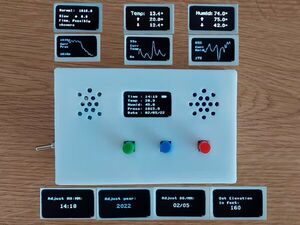
Temp, Humidity and Pressure monitor/weather forecast/graphs
"Rechargeable temp, humidity and pressure monitor, weekly history files and graph display. Weather forecast base on the Zambretti Forecaster. Having created a few projects with the Arduino I wanted to experiment with the Raspberry Pi Pico as it can also run off a 3.7v battery and has a larger internal memory so offers the ability to create more complex projects. This project is an evolution of my project “Temp and Humidity Monitor with Graphs and Battery Monitor”. I have added a BMP180 pressure and temperature module and only use the DHT11 for humidity as the BMP180 is more accurate for temperature. With the addition of monitoring pressure, I could also add a weather forecast based on the Zambretti Forecaster model." [...]
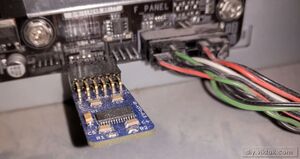
Home Made TPM2.0 Module
"With the recent launch of Windows 11 Microsoft also made having a hardware TPM module mandatory. Although this technology is not new (it was introduced in Windows 10 and Windows Server 2016), now, that most people can’t upgrade to Windows 11, it will (slowly) become mainstream. (My personal opinion on it is that is probably a step in the right direction, but Microsoft could have handled mandating it better..) Several months ago, when I heard about this new requirement, I checked how much this upgrade for me would cost. At the time prices for a TPM2.0 module for my motherboard (Gigabyte AORUS GAMING 3) started at around €150, which is not much less then, but definitely comparable with, the price of the motherboard itself. Not prepared to pay that much for a “free” Windows 11 upgrade, I started to look into if and how I could create the same thing on my own. Research, things I learnt During the research for this module I learnt that these modules are not identical for each motherboard brand and model, which makes it somewhat difficult for the average user to buy the correct one." [...]
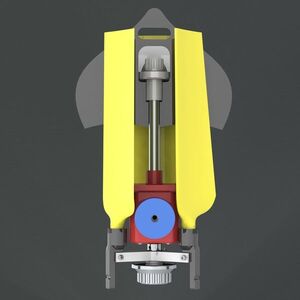
3D Printed Portable Wind Turbine
"A small Portable Wind Turbine, mostly 3D printed! A wind turbine mostly 3D printed , which houses a Nema 17 stepper motor as an electric generator. Foldable and no larger than a 2L soda bottle. Simple to replicate and with a low manufacturing cost. CAD, STL and how to make it included. Generally when I want to get away from the city and camp, I take some kind of power source with me." [...]
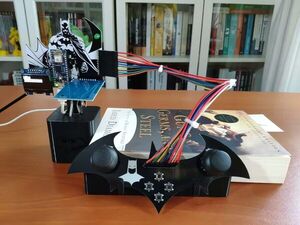
IoT Bookmark and Reading (Book Ratings) Tracker w/ Qubitro
"Via Nano 33 IoT, use RFID tags as bookmarks to record your ratings. Then, inspect them on Qubitro to grasp and review chapters deliberately. While reading books or comics, I am fond of recording my ratings on a daily basis to track any surge or plunge in my interest regarding each chapter. Also, I can review books effortlessly by scrutinizing my ratings and notes after completing reading them. Since I have always logged my ratings on a notebook or a piece of paper, my home library has been deluged with unsolicited paper clusters. Therefore, I decided to create this IoT device to log and monitor my book ratings so as to obviate the need for handwriting." [...]
NodeMCU ESP8266 NeoPixel Control web server
"A simple web server hosted on ESP8266 to control effects of NeoPixel strip, using NodeMCU Lua Firmware. Why ESP8266 + NodeMCU Lua webserver + NeoPixels ? Neopixels are absolutely fun to work with and adding a wifi control to them makes neopixels more fun. However, most of the ESP8266 + NeoPixel projects I have referred on internet are programmed using Arduino, Micropython or WLED (these three are great BTW) and there are only few examples with NodeMCU Lua. The NodeMCU Lua is excellent firmware for implementing Asynchronous Event-Driven solution in Nodejs style, Hence, I created this project to demonstrate the capabilities and ease of using NodeMCU Lua Firmware. Also, NodeMCU Lua provides ws2812b and pixbuf modules to make interactions with neopixels easier." [...]
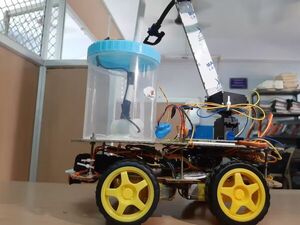
Agricultural Pesticide Spraying Robot
"This project can assist individuals in a variety of situations including agricultural production and pesticide application. The project provides a new approach for replacing people in different agricultural activities such as pesticide spraying, fertiliser spraying, and other tasks, therefore ensuring the safety of farmers. The created approach entails creating a prototype that employs simple, low-cost equipment to assist farmers in various agricultural field chores. " [...]

Control Moment Gyroscope | Active Boat Roll Elimination
"Hello, and welcome to my instructable. This project is to make a scaled prototype for an active control system to eliminate boat-roll caused by waves. This project was originally designed by myself, Kaden Werner, and my project partner, Alex Morin, for a college course in Electrical Engineering Technology. The goal of the course was to design, construct and program some form of control system related to process control and automation. Together, we decided to use the angular momentum of a spinning flywheel to apply torque to a model ship's body in response to offset in the roll axis to control the oscillations of the model as it returned to center. This project is inspired by the commercially available product, the Seakeeper, and a project video posted by James Bruton on Youtube." [...]
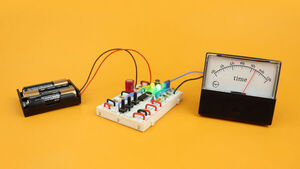
Building an analog clock with a microcontroller
"Microcontrollers are digital devices, but in this project we will turn it around and use a PIC microcontroller to build an analog clock using a panel meter. And what's more, we will make use of the SLEEP mode of the PIC microcontroller so that this circuit can be run off of batteries and keep the time for decades when not powered on. The panel meter shows the time, here from 0 to 12, and a yellow LED on the breadboard tells us whether it is PM or not. The three pushbuttons on the breadboard are used like this: ON/OFF: The leftmost button turns the clock off or on. When it is off it still keeps the time, though, because the microcontroller goes into an ultra-low power mode that is also called sleep mode, and we will talk much more about it later. UP: Pushing the middle button increases the time." [...]

ArmaLamp - Armageddon resistant night lamp
"Plastic covered photo cells + Supercapacitor with unlimited life Features: - 6x BPW34 photodiodes aka solar cell (plastic diodes, more resistant to damage against glass solar cell) - Up to 10F supercapacitor (You can use bigger capacity but 10F is optimal for charge in one sunny day) - 4 hours operation in night depends on intensity - Auto night on - Step up converter effective use all stored energy, discharge scap until 0.3V !!!!!! - Output is activated in night To Do: - make smaller board to fit in acrylic sample bottle" [...]
Building a MIDI Controller / MacroPad
"I love tinkering with the Raspberry Pi Pico, since it is an easy starting point for anyone that wants to get into microcontrollers. In this detailed instructuble I want to guide you how you can create your own MIDI controller or MacroPad. If you are a musician and in need of a cheap but awesome looking MIDI pad then this project for you, or if you are just someone who is in need of a new MacroPad but you don't want to buy the generic cherry mx keys kits but would prefer some classic arcade buttons then you are in luck, because we can set the Raspberry Pi Pico to do either of those two functions. If you are not sure what a MIDI controller or MacroPad is, let me break it down for you: MIDI controller: A MIDI controller is a simple way to sequence music and play virtual instruments on your Mac or PC. It works by sending MIDI data (Musical Instrument Digital Interface) to a computer or synthesizer, which then interprets the signal and spits out a sound. MacroPad: A macro pad can give you plenty of buttons for your macros." [...]
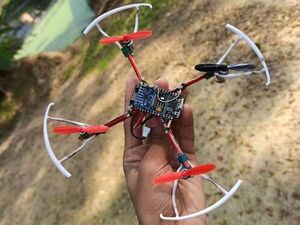
Make a Quadcopter Using ESP8266 - This Quadcopter Can Climb
"Hey, friends how are you -:) I hope you all are fine, today I came with a new Ideas. A lot of people are building interest in flying a drone today I will Show you how to make a Make a Quadcopter Using ESP8266 (12e) we use esp8266 as a flight controller - This Quadcopter Can Climb on Wall Hue hue. Are you shocked to hear that this drone can climb on the wall? joked Flight controller The flight controller (FC) is the brain of the Quadcopter. It is basically an integrated circuit board that includes sensors that detect changes in orientation. It also receives user commands and controls the motors to keep the quadcopter in the air." [...]

LNK304 Transformerless Power Supply
"LNK304 Transformerless Power Supply Whenever you hear the transformerless supply term, you initially imagine the capacitor-based solution, which means a high voltage capacitor in series with the mains line, then a bridge rectifier, a Zener diode, a filtering capacitor, and so on. Such a circuit is not just able to deliver sufficient current for many applications, also, it is not a reliable solution for the industry, although you might see such circuits in some cheap products that are designed to have a low cost. A month ago, I was repairing a washing machine mainboard. In the examination process, I realized that it is equipped with an LNK304 chip that is used in transformerless supplies. So I decided to design a circuit based on this chip to be used in your applications. The circuit contains 220VAC mains input protection, output filtering, and a regulator." [...]

Cistercian keyboard
"Keypad with cipher numerals. This keyboard is for me more of an art project. And the opportunity to learn how things work. What is the underlying code and history! Arouse people's curiosity. What are Cistercian numerals?" [...]

DIY Super Simple Sensitive Metal Detector
"Extremely simple Metal Detector whose making requires only one cheap integrated circuit TL084. It can detect metal coin at 15cm distance, and big plate at more than 50 cm. As I mentioned before, the device is very simple to make and contains only a few components: - TL084 general purpose quad operational amplifier (You can also use TL074 or TL064) - Small variable capacitor with capacitance of 100pF taken from old portable AM Radio - Crystal earpiece who need to connect to this jack - and search coils This time I will introduce you to another extremely simple Metal Detector whose making requires only one cheap integrated circuit. The project was presented in Everyday Practical Electronics Magazine by Thomas Scarborough in June 2006. At the expense of simplicity, the results are incredibly good. The device is characterized by excellent stability and sensitivity, so for example a small metal coin can be detected at a distance of 15 cm, and a larger metal object at more than 50 cm." [...]

PWM variable speed for DC motor (120V-15A) IGBT switching
"Arduino controlled PWM chopper, acceleration and deceleration ramp, motor braking, OLED display and a little more... I had to carry out this project in a hurry because the motor of my milling machine gave up the ghost. So please be indulgent because there are still sentences in French on the schematic that I have not taken the time to translate. There may also be inconsistencies, particularly in the pinouts of the connectors. Also the software looks more like a draft but it's working rather well. Note that you need advanced skills before embarking on this achievement." [...]

Butterfly LED Panel: Smart Light for ESPHome
"I've always been a fan of light panels, at least ever since I first saw Nanoleaf's products. My apartment has slanted walls, and it's always been an issue to light it properly. Nanoleaf light panels got the job done, but one place left without proper lighting: kid's bed, right underneath a slanted wall. At first I figured I'd just pay up and buy more light panels. But she's such a big fan of butterflies - already had tons of stickers on that wall. Then it struck me: I could make her a butterfly-shaped light panel to serve as a night light." [...]
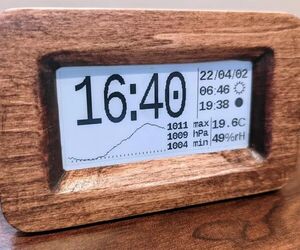
E-Paper Clock
"This project is an e-Paper clock and weather station that automatically sets itself (via GPS) and can be built to last about 6 months on 4 AAA batteries. It purposefully does not need any network connections for the sake of security and reliability. Features include: - Autoset (via GPS) - Current temperature. - Current humidity. - A pressure graph showing pressure over the last 25 hours. - Sunrise and sunset times - Current moon phase - Select between 12h or 24h modes." [...]
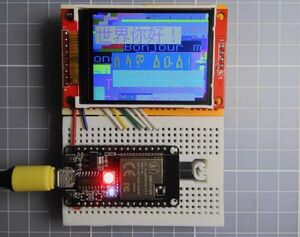
Display Unicode in Arduino
"This instructables show how to display Unicode text in Arduino. Supplies: - Any Arduino dev board with Arduino_GFX supported display. " [...]
DIY Midi Controller
"Music is a large part of the entertainment industry, and is enjoyed by many around the world. While music is accessible to those who enjoy it, creating music is not always easy since some users might not have access to the instruments or technology needed to create the sounds they want. Our solution for this is a DIY MIDI controller, a simple-to-use physical interface that allows you to create sounds and music virtually through your computer. MIDI controllers have been in the music industry for many years. [1] The controllers themselves can be fairly expensive. [2] The goal of this instructable is to allow users to create their own MIDI controller for a reasonable price of less than $100 [3]." [...]

Project Midbar
"Midbar (מדבר) is a Hebrew word that means "pasture," "uninhabited land," "wilderness," "large tracts of wilderness (around cities)," "desert." There are two reasons why I chose the word Midbar as the name of this project. First - while working on my previous projects, I noticed that the so-called "device that keeps your personal data secure in an encrypted form" market is pretty much a "desert around the oasis of the password manager market." Second - I couldn't find a better word to describe that project. At first, I wanted to name it a "Password Vault," but then I realized that this is also a "Credit Card Vault," "Note Vault," "Phone number Vault" and just "Data Vault." None of these names would be a complete description of this device, and using a combination of all of these to name it would've been weird, hard to remember, and just inconvenient." [...]

A Color Sensing Glove That Sends the HEX Code to a Computer Program
"Wouldn't it be cool to see something on our desk or nearby, a color that we like, and add it directly to our projects on our computer? Now you can! You can make this hand-worn wearable that uses a color sensor to detect colors from the environment around us. Then it lights up NeoPixels with the color we scanned, and writes the HEX code to an OLED on the glove. This HEX can then be sent to our computer (with touch input) - directly into what we are working on to add the HEX code for us. The supplies I've used for this project include: - Adafruit Flora board or Circuit Playground Classic - Flora sewable color sensor - 4x4 grid NeoPixels but any shape will work (I've linked to the circle x 16) - OLED screen 128 x 64 - wires - soldering or conductive thread to sew the connections - you'll a small piece of conductive fabric to act as a touch input button to send the HEX value to your computer - Felt, neoprene, or material for the glove, or a recycled glove is even more eco!" [...]

Pitch Sequencer for Tascam Porta 02 | PWM Microcontroller Tape Sequencer
"This Instructables will teach you how to make a programmable pitch sequencer for any cassette tape machine, using Pulse Width Modulation (PWM) from a Raspberry Pi Pico. By the end of the project you will be able to add pitch and volume automation to your tape loops, using a custom OLED interface and a single rotary controller. If you have been wanting to add a pitch mod to your tape machine but haven't been sure how, or if you're looking to upgrade your existing pitch mod, this tutorial will guide you through the process from start to finish, including some background theory, and links to scripts and resources. BASIC MATERIALS Raspberry Pi Pico ~ £3 Rotary Encoder KY-040 ~ £1.5 OLED SSD-1306 ~ £4 2N7000 N-Channel MOSFET ~ £1 Micropython Code Available Here ADDITIONAL MATERIAL If you want to add a volume gate you will need: LED (doesn't matter what colour/size) LDR Heatshrink or Electrical Tape If you want to make a case: Any material you like! You could look at making a 3D printed case, or even look at ways of mounting the circuit into the tape machine. If you end up making it an external module, then I suggest using 3.5mm jack cables to connect between the module and the tape machine." [...]
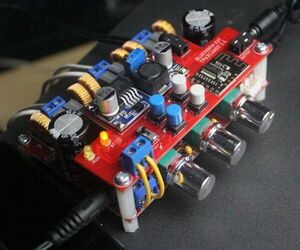
DIY Bluetooth Audio Receiver + Pop Noise Remover for Amplifier TPA3116D2 2.1
"In this article I will make a special audio receiver bluetooth module for the TPA3116d2 2.1 Amplifier (then I will call TPA3116d2). I call it special because the design of this module is based on the PCB TPA3116d2. To see the design of this module, you can see the top module in the image above. Based on the article "Remove Pop Noise on TPA3116d2 Amplifier" that I made earlier, the TPA3116d2 produces pop noise when first turned on. So I added pop noise remover in bluetooth module which i will make in this article. Overall, the module that I will make has two functions that are quite useful for TPA3116d2 users, namely: Bluetooth audio receiver (stereo) Pop noise remover So, let's start making the module" [...]
WiFi Controlled Mark IV Tank 3D Printed
"Hello builders, that is my redesign of the British army's original Mark IV tank from WWI. I hope you enjoy it. I designed this robot for half a year. It was my first thing I ever designed. I had a lot of setbacks, but I finally made it. I build it for a science competition, but I didn't nail it in time." [...]
Secção Videos
Videos interessantes.
That's all Folks!



